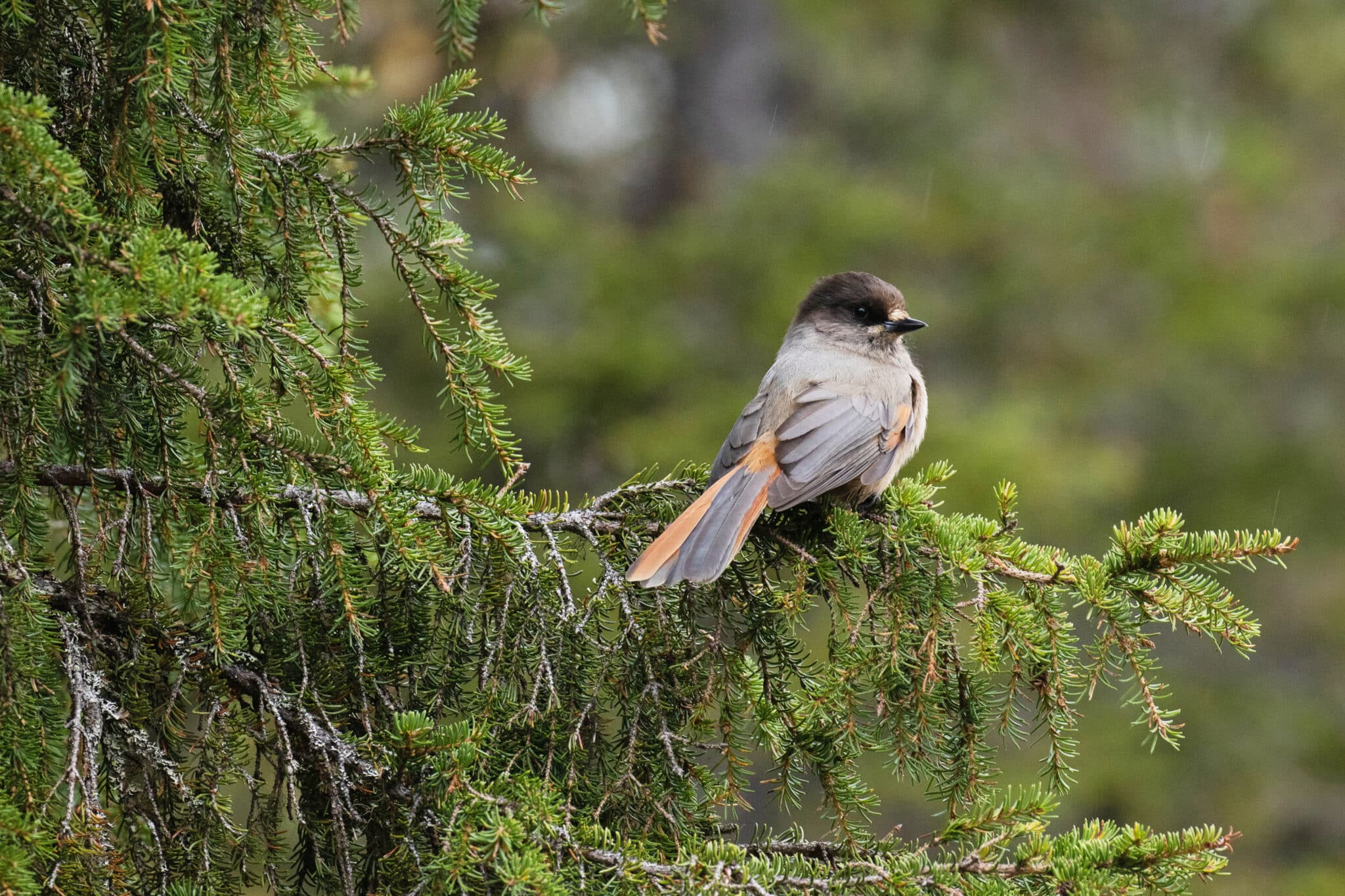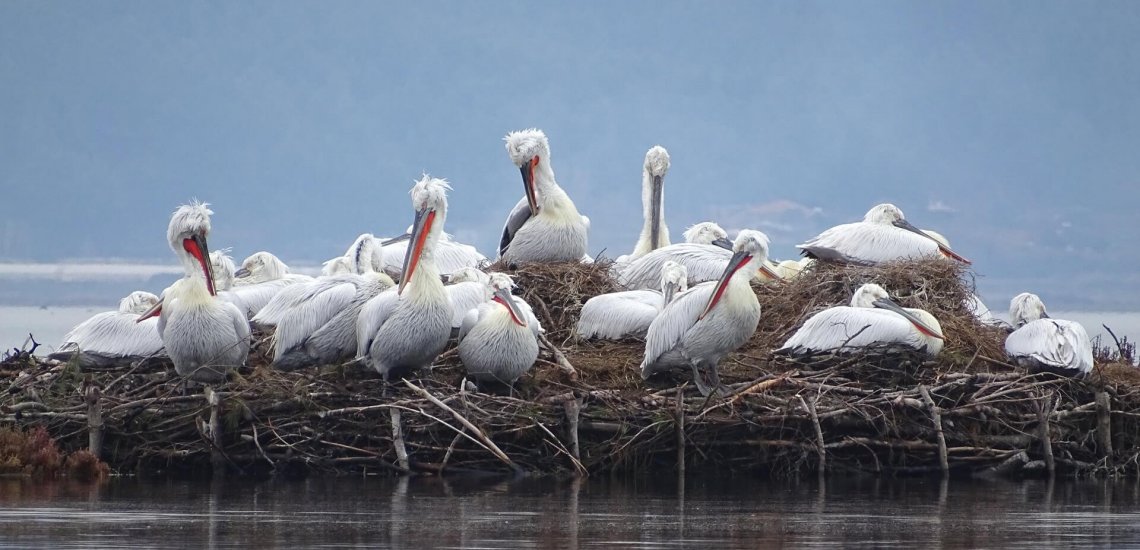Protecting Finland’s feathered friends

This year, BirdLife Finland is celebrating its 50th anniversary. As the country’s largest ornithological society, throughout its history it has been at the forefront of protecting its diverse range of birds and habitats.
By Liam Hughes
Header image: Forests once stretched across roughly 75% of Finland, but intensive forestry is now a major threat to the country’s birds © Jamo Images/Shutterstock
Located in the northern reaches of the East Atlantic Flyway, Finland has a diverse range of habitats, from vast expanses of ancient boreal forests and peatlands to an array of wetlands and the Baltic Sea archipelago off its south-western coast. More than 250 bird species breed in Finland, and the country is particularly important for those that rely on its boreal forests and peatlands, which once stretched across more than 75% of the country. These support 80% of the European breeding population of Broad-billed Sandpiper and half of its Spotted Redshanks, before they journey south for the winter.
As the country’s oldest and largest ornithological society, made up of 30 regional groups, BirdLife Finland has been at the forefront of protecting this extraordinary diversity, whether being active members of key government policy groups for wind energy, agriculture and forestry or working alongside hunters to establish a network of no-take zones throughout the nation.
As its State of the Birds in Finland 2021 publication starkly highlights, this protection is certainly needed. The report showed that almost half of Finland’s breeding species are nationally Red Listed, with significant declines occurring across nearly all of the country’s habitats, owing to various threats, including the intensification of agriculture and forestry, eutrophication of its wetlands and peatland drainage.

Push for protection
BirdLife Finland cites its Important Bird and Biodiversity Area (IBA) programme as one of the most successful. It has identified 100 of these globally important sites throughout the country, as well as additional ones of national and provincial importance, and continuously pushes for their protection. However, new protected areas often come with pushback, and BirdLife Finland has found that the strict criteria used to designate IBAs as globally important sites has been useful evidence to convince Finnish courts of their value.
A case in point is Kemihaara, a vast 14,000ha mosaic of mires and boreal forests, with globally important populations of 22 species, including more than 2,500 breeding pairs of Rustic Bunting (Vulnerable). For decades the IBA was threatened by an energy company’s plans to construct a reservoir. Alongside other Finnish conservation groups, BirdLife Finland campaigned for years against the development, which would flood 250km2 of its forests and peat bogs. In 2019, the Finnish government finally declared it a Natura 2000 Special Protected Area, in large part owing to its designation as an IBA.

Birds on the map
One of BirdLife Finland’s ongoing projects is the fourth instalment of its Bird Atlas of Finland, a rigorous assessment of all breeding birds within each 100km2 area of the country. Given the country’s vast size, and that much of it is in remote, Arctic terrain, this is no easy task. However, this arduous research, conducted by more than 5,000 members of the society, provides an invaluable assessment of the country’s bird populations and how they are changing over time.
The latest data highlights an ever-increasing threat to Finnish birds – climate change. As species continue to shift their ranges to adapt to warmer temperatures, Finland’s northern species have declined steeply. For instance, the increasing lack of snow renders Willow Grouse’s all-white winter plumage useless for camouflage, and compared to the 1970s, it now only occurs in a fraction of its northernmost Finnish range.
However, the milder winters have seemingly benefited wintering populations of some of the country’s southern birds. In the 1970s only a handful of Tufted Ducks spent the winter in Finland, whereas they are now counted in their thousands. The effectiveness of the existing protected area network as bird communities continuously change will therefore undoubtedly be a key issue moving forward in Finland.


A country of birders
Alongside this more traditional conservation work, instilling a passion and connection to nature among the Finnish population is another fundamental aim. By running various events through its partner organisations, such as birdwatching trips and bird ringing days, the ornithological society has built a growing Finnish birding community and now boasts an impressive 27,000 supporters.
BirdLife Finland has also focused on establishing this interest among the wider public, its 2017 campaign to mark 100 years of Finnish independence being a particular success. Encouraging Finns to celebrate the year by recording 100 species, it’s now a household idea and thousands continue to take part. Encouragingly, these efforts are paying off. In a recent national survey, close to a quarter of Finns said they are birding enthusiasts and there has been growing public support for habitat protection in recent years. As Finland’s largest ornithological society, this is certainly a testament to its efforts.
“This is what we are especially proud of and it encourages us in our work every day,” says Aki Arkiomaa, Director of BirdLife Finland. “Thanks to our internet-based events, we reach all Finns from the coast to the fells and the Big Garden Birdwatch has become Finland’s largest nature event.” With a packed schedule to celebrate its 50th year, this connection to birds will hopefully increase, and is a shining example of garnering the level of support for nature that our planet certainly needs.

Partner profile

BirdLife Finland
Staff: 13
Number of IBAs: 100
Number of globally threatened birds: 11
Number of protected areas: 12,000


